

 The South African
The South African
by A J Nathan
The Boer General Piet Cronjé was amongst the first contingent of 514 to arrive in St Helena on board the troop-ship Milwaukee, escorted by the HMS Niobe. On 27 February 1900, Cronjé had surrendered to Lord Roberts after the battle of Paardeberg. Illustrating his arrival on the island of St Helena, Punch magazine depicted the Boer general saluting the ghost of Napoleon and saying 'Same enemy, Sire! Same result!'
Prior to the arrival of the prisoners, the governor of St
Helena, R A Sterndale, published the following proclamation:

Kent Cottage, the residence of General Cronjé and his wife on
St Helena (Photo: A J Nathan)
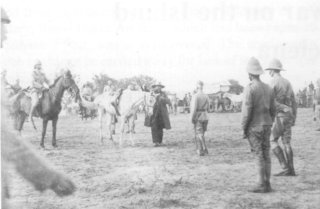
General Cronjé surrenders to General Roberts
after the battle of Paardeberg.
(Photo: by courtesy of the Archives, Cape Town).
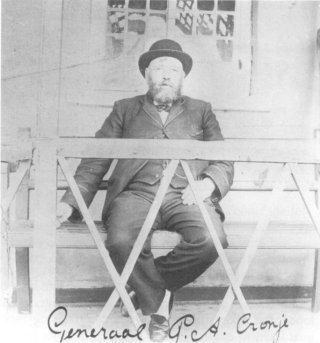
General Cronjé outside Kent Cottage.
(Photo: by courtesy of the Archives, Cape Town).
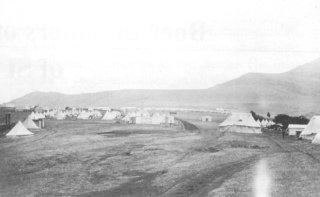
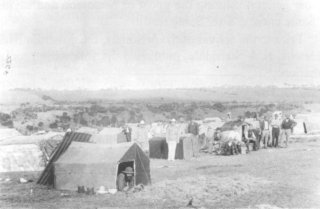
POW camp on Deadwood Plain, St Helena
(Photos: by courtesy of the Archives, Cape Town).
Considering the isolation of St Helena, surrounded by thousands of square kilometers of ocean, escape was virtually impossible. Yet, on 2 February 1901, four prisoners, including Commandant P Eloff, grandson of President Paul Kruger, made a determined attempt at Sandy Bay. Having collected a quantity of provisions, the four men seized an old fishing boat in which to make their escape. However, fishermen removed the oars and, despite a struggle, managed to hold on to them. The prisoners climbed into the boat and tore up the bottom boards, intending to use them as paddles. Finding them to be useless, the prisoners then returned to the beach and tried in vain to bribe the fishermen, offering them a good sum in exchange for the boat and oars. In the meantime, a messenger had been sent to report the occurrence and soon after dawn a guard arrived from Deadwood Camp to arrest the escapees.
Another escape was attempted by two Frenchmen amongst the prisoners. Whilst bathing off the beach at Rupert's Bay, they tried to swim to a ship at anchor. Spotted by the guardship, guns were directed against them and they were challenged, whereupon one turned and swam back to Rupert's Bay, whilst the other swam to the landing steps at Jamestown, only to be escorted back to camp.
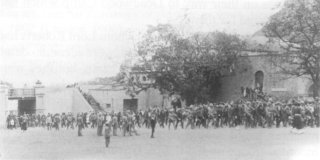
POWs arrive in Jamestown
(Photo: by courtesy of the Archives, Cape Town).
Despite the enormous odds against them, two prisoners could not resist another attempt at escape. Swimming from the wharf in Jamestown to a waterboat, the Phoebe, they set up sails and managed to slip away, unseen. The boat was not missed until the next morning and it was spotted from the signal station on Ladder Hill. The steamboat, the Beagle, was sent to retrieve it. Brought before the magistrate, one of the prisoners declared that he had had no intention of stealing the boat but had merely wanted to get away from the island! He was fined £5, which was paid by his fellow prisoners, and sent back to camp.
The Boer camp at Deadwood Plain was surrounded by three separate barbed wire fences and guarded outside by patrolling soldiers. By and large, there was little trouble but as in most communities where men are closely confined there were bound to be some agitators. Usually the prisoners would settle their differences amongst themselves but occasionally cases were reported to the British commandant and then the ring leaders would be confined for a time at High Knoll, a large fort isolated on a hill top.
It was inevitable that there were occasional spots of serious trouble. For example, on one Saturday night early in 1901 a prisoner was shot by a sentry. It emerged at the Military Court which followed that for some time the prisoners had been pelting the sentries with stones, sticks, tin cans and other missiles, and that the sentry in question had been struck in the face on that occasion.
Tired of sharing tents, some of the prisoners saved some money and constructed cosy little huts out of paraffin tins soldered together and lined with wood or cloth. The commandants were allowed to live outside the camp in comparative freedom, with few restrictions being placed on their movements.
In 1902, there was a serious outbreak of enteric fever in the camp, the cause of which remains rather obscure. Since the water supply was not found to be at fault, it was concluded that the disease had been brought to the island by the last contingent of prisoners to arrive. A number of nurses and additional medical aid were brought in and the fever, which caused numerous deaths, gradually declined.
As time passed, many prisoners gave their names to the British commandant, indicating that they were in favour of peace. This caused such bitterness amongst those loyal to the Boer cause that the authorities were compelled to form another camp. called Peace Camp or No 2. Later, General Cronjé himself went to the Castle and took the oath of allegiance. His guard remained with him at his request, as many of the prisoners were resentful towards him. He finally left St Helena for the Cape on 22 August 1902 with 994 other prisoners in the transport Tagus.
Many incidents reflected the general good feelings
which existed amongst the prisoners, the local population
and the military staff. A typical example of this was the
following address presented by the German prisoners of
war to the governor before leaving the island:
In the first place we want to express our heartfelt thanks for the kindness and consideration shown to the POWs. The kindness shown to one and all by all the people of the island, with a few exceptions, is a fact that will be long remembered and cherished by them as a bright spark in the gloomy days of captivity at St Helena.'
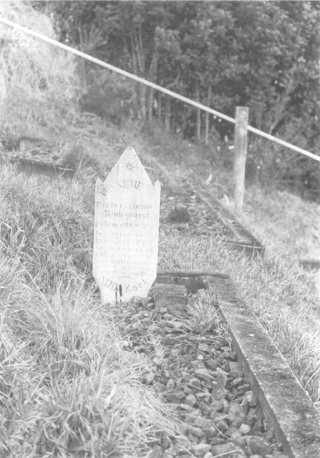
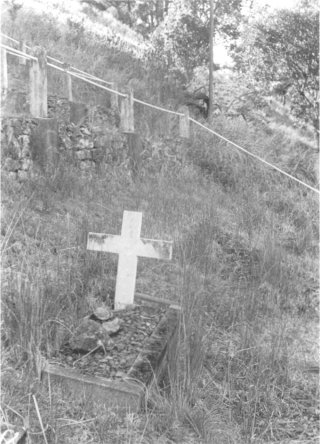
POW cemetery
(Photos: A J Nathan).
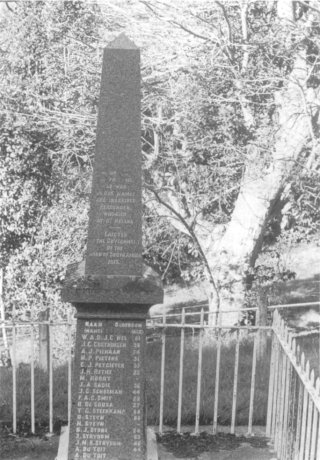
One of two granite memorials in the Boer cemetery with
names and ages of those who died on the island
(Photo: A J Nathan).
Jackson, E L, St Helena (Ward, Lock, 1903).
Gosse, P, St Helena, 1502-1938 (Cassell & Co.)
St Helena Guardian. 12 and 19 April 1900, 17 May 1900,
February 1901, 20 May 1901, 4 July 1901, 15 August 1901,
8 May 1902, and 10 July 1902.
Return to Journal Index OR Society's Home page
South African Military History Society / scribe@samilitaryhistory.org